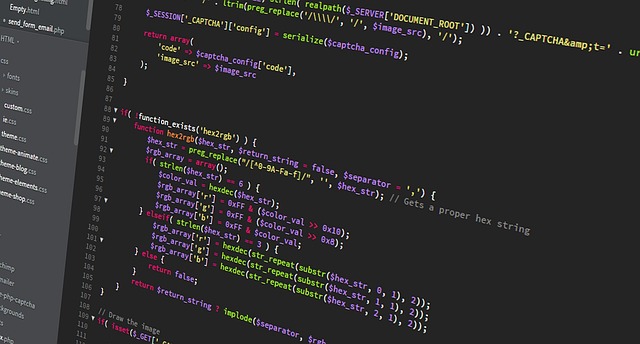Have you ever wondered what the difference between Enterprise Resource Planning (ERP) and Enterprise Systems (ES) is? Does it often confuse you how these two distinct systems operate within a corporate setting? Are the boundaries contrasting these two often blurred in your understanding? These are all valid questions when diving into the world of business systems and understanding the intricate distinctions between them is paramount.
The primary predicament arises from the overlapping functionalities and systems used by both ERP and ES, which leads to confusion. According to Wagner et al. (2016), there’s a prevalent issue with misinterpretation and misrepresentation of these systems. Baltzan (2021) also points out the lack of understanding stemming from loosely defined industry jargon. To alleviate this issue, a proposed remedy is to formulate concise definitions and elaborate examples that clearly delineate ERP from ES.
In this article, you will gain an insightful perspective on the major differences and similarities between ERP and ES. It aims to guide you through the labyrinth of technology terminologies, providing a clear understanding of how both these systems function. Furthermore, the article will provide detailed insights about the implementations, benefits, and risks associated with each of these systems.
Your understanding of ERP and ES can significantly influence how you approach business systems. Gaining clarity and comprehending the distinctions between ERP and ES could help streamline your business processes and contribute to better decision-making. This article aims to equip you with this crucial knowledge and allow you to navigate through the complex world of business systems more efficiently.

Definitions of ERP and ES
ERP (Enterprise Resource Planning) is a business process management software that integrates various functions into one complete system aiming to streamline data and processes across the entire organization. This system includes modules like finance, HR, supply chain, etc. all functioning seamlessly to facilitate information flow between all business functions.
ES (Enterprise Systems) is a broader term than ERP. It includes any large scale application software that supports business processes, information flow, reporting and data analytics in complex organizations. While ERP can be considered as a type of ES, other types may include Customer Relationship Management (CRM) systems, Supply Chain Management (SCM) systems and others. ES aims to support intricate, enterprise-wide operations and data needs.
Understanding the distinct role: ERP vs ES in today’s digital business
The Basics of ERP and ES
Business enterprise applications
Microsoft 365 Apps for Enterprise
Enterprise Business apps generator
ERP, which stands for Enterprise Resource Planning, and ES, short for Enterprise System, are two vital concepts in modern business operations. ERP refers to a suite of customizable applications that allow businesses to integrate and manage their most crucial processes. These can include everything ranging from procurement, supply chain management, human resources, customer relationship management to financial tracking among others. With ERP, all these services are streamlined for efficiency, improved decision-making, and lowered costs.
ES, on the other hand, is a broad term that pertains to any large-scale software application used to support or automate the operations of a business. This can include ERP, but also other systems like product lifecycle management (PLM), customer relationship management (CRM), and supply chain management (SCM). ES’s come in many forms, designed to fit unique business needs, market segments, or industries.
Key Differences Between ERP and ES
Despite the evident overlap between ERP and ES, they do have defining differences. First, their scope and target users differ. An ERP system focuses on integrating various departmental functions into a single, coherent system, thus its primary users are mid to large-sized companies. ES is a broader term used to describe software that assists businesses, regardless of their size, in managing daily activities or operations.
Second, ERP systems are typically customized to the specific requirements of a business, while ES’s can be generalized software solutions.
- ERP systems provide a more comprehensive solution through their ability to harmonize various business processes, thereby enhancing operational efficiency. ES’s, in contrast, may target specific areas without the necessity for integration.
- ERP systems encompass a variety of business operations within a single framework, while ES’s may operate independently of each other with each system focused on a specific business functionality.
- Implementation of ERP systems can be fairly complex as it necessitates an overhaul of existing business processes to fit into the new integrated model. ES’s on the other hand, can be easily implemented along existing processes without causing significant disruption.
All in all, both ERP and ES play distinctive roles in today’s digital business landscape. In choosing between the two, businesses should carefully evaluate their needs, keeping in mind the functionalities and capabilities the systems offer.
Deciphering the complexities: How ES diversifies beyond ERP’s operational horizon
Deconstructing the Operational Versatility of ES
Isn’t it intriguing that businesses today are seeking ways to extend their operational capabilities beyond traditional resource planning systems? Enterprise Systems (ES) have surfaced as a strong alternative or should we say a complement to Enterprise Resource Planning (ERP) systems. The key divergence between ERP and ES lies in their respective ambit of functionality. ERP systems primarily deal with the integration of core activities and resources in an organization such as finance, accounting, and human resources amongst others. On the other hand, ES goes a step further to encapsulate not only the core business operations, but also external processes, thus establishing an interconnected network between the various stakeholders including suppliers and customers.
Addressing Fundamental Limitations of ERP Systems
Despite their integral role, ERP systems often confront one major complication. They frequently struggle to encapsulate and seamlessly integrate external business operations, a drawback that often limits an organization’s capacity to have holistic understanding and control over its entire business ecosystem. The issue is exacerbated by the fact that ERPs are largely inward-looking, optimized to streamline and automate routine, internal processes. While this is no doubt essential, it often leaves the critical external processes and expanded business needs unaddressed. ES emerges as an advanced solution to this problem.
ES has the ability to extend the reach of an organization beyond internal processes and touch upon interactions with other stakeholders, such as suppliers and customers, making it more expansive and inclusive. This eliminates information silos, improves decision making, and enhances the transparency of business operations for management. By enabling strategical planning and flexible responses to changing business scenarios, ES is helping businesses transcend the operational boundaries set by ERPs.
Unfolding Stories of Success: ES Best Practices
Several forward-thinking enterprises have embraced ES and experienced significant benefits. Firstly, let’s look at the case of a manufacturing firm that replaced its traditional ERP with an ES. The company reported an increase in efficiency, better understanding of customer needs, and enhanced control over supplier relationships. Having a comprehensive view of their supply chain afforded them the ability to identify bottlenecks and improve processes, leading to a substantial increase in their operational efficiency and customer satisfaction.
Another instance is that of a global retail giant that implemented an ES to unify its global operations. With multiple branches across various countries, their previous ERP was inadequate in facilitating integrated decision making. The shift to ES enabled the company to consolidate disparate operations, streamline decision-making processes, and improve their overall business strategies. These examples emphasize how ES can provide an enterprise with a more comprehensive and real-time monitoring of all business processes, thereby fostering proactive decision making and strategic planning.
Unveiling the truth: Does ERP fall under ES, or is it a standalone entity?
Probing the Depths of ERP and ES
Is it accurate to categorize ERP (Enterprise Resource Planning) under ES (Enterprise Systems), or is ERP a separate entity entirely? Understanding the differences and intersections between these two systems is crucial for businesses seeking to streamline processes and optimize efficiency.
Enterprise Systems (ES) are large-scale software packages that track and manage critical business operations such as inventory management, sales, marketing, finance, and human resources. They offer an integrated, company-wide perspective, pooling data from various departments into a single unified database.
On the other hand, Enterprise Resource Planning (ERP) systems can be viewed as a subset of Enterprise Systems. This is because ERP mainly focuses on business processes, streamlining them through integration and efficient information flow. It bridges the gap between business processes and information technology, by providing a single, unified source of data that can be accessed and analyzed by different departments. This contributes to more efficient operations as it eliminates redundancies and promotes greater transparency and coordination between departments.
The Core Challenge
A significant challenge in differentiating between ERP and ES lies in the vast overlapping functionalities they provide. Both aim to unify diverse business functions into a cohesive, functional whole, improving efficiency and streamlining processes. However, their implementation and the scale of their operations can vary significantly.
The main problem arises when businesses misunderstand the purpose and usage of each system. A common misconception is to see ERP only as a tool for resource planning. While resource planning is a core functionality, ERP systems offer much more than that, such as finance management, supply chain management, and human resources management. Similarly, ES are often labeled as mere incorporators of various functions, while in reality, they play an instrumental role in shaping the strategic directions of an organization through integrations of data and process structuring.
Mastering the Use of ES and ERP
Many successful businesses have properly implemented ES and ERP to harness the benefits of both. For example, corporations like IBM, Microsoft, and Procter & Gamble have effectively utilized these systems for better decision-making, improved efficiency, and reduced costs.
Microsoft, for instance, leverages its ERP system for better customer relationship management and improved profitability. Through meticulously planned implementation, Microsoft has made its ERP system a critical part of its success. By marrying business strategies with technologies, these corporations have managed to save millions of dollars and increase productivity. Similarly, IBM uses an ES to manage its worldwide inventory and supply chain – a critical function that cannot be overlooked in the global marketplace.
In conclusion, understanding and differentiating between ERP and ES are critical for businesses. Both systems offer immense benefits that can promote growth and success when properly implemented. As reflected in the examples of global corporations like Microsoft and IBM, companies that effectively utilize ERP and ES can enjoy improved efficiency, cost savings, and strategic advantages in their operations.
Conclusion
Can we really make a clear distinction between Enterprise Resource Planning (ERP) and Enterprise Systems (ES) in the contemporary business scenario? Perhaps, the answer isn’t black and white. As we’ve discussed in this article, despite having core differences, ERP and ES significantly overlap in their functionalities and objectives. ERP is essentially a subset of ES and while the former concentrates on integrating various business processes into a unified system, the latter is far more comprehensive. ES not only supports the operational coordination within an organization but also extends to incorporate customer relations management, supply chain management, and e-business.
We hope this discussion has been enlightening and has added to your knowledge domain. Our endeavour is to consistently deliver quality content that helps you keep pace with the fast-evolving business and technology landscape. Your consistent readership motivates us to delve deeper into pertinent topics. We look forward to retaining your interest with engaging and enriching content in our subsequent blog posts. We welcome you to become part of our reader community and stay updated with emerging trends.
As we continue exploring complex corporate phenomena, there is a range of exciting topics lined up for our upcoming posts. So, in the spirit of continuous learning and curiosity, we urge you to keep an eye on our blog. Our upcoming articles promise to be insightful, compelling, and thought-stimulating, ensuring that you are always one step ahead in your professional journey. Hold your curiosity as we will soon unravel more intriguing aspects of the corporate world. Stay tuned!
F.A.Q.
1. What is an ERP system?
An ERP (Enterprise Resource Planning) system is a business process management software that integrates and manages company-wide necessary operations like procurement, finance, supply chain, CRM, and HR. It ensures all these areas work cohesively to achieve the main business goals.
2. What does ES stand for in the context of business software?
ES stands for Enterprise Systems. These are large-scale software packages that track and control all of the complex operations of a business. They are typically used by large multinational businesses with diverse operations.
3. How does an ERP system differ from an ES?
While both ERP and ES provide integrated solutions to manage various business processes, the key difference lies in the scope. ERP is a subset of ES, which means ES covers a broader range of software systems including ERP, CRM, and SCM, while ERP focuses more on the integration of internal business processes.
4. Can an ERP system and ES function together?
Yes, an ERP system can function within an ES. Since an ES includes different types of systems (like ERP, SCM, CRM), an ERP can operate as a component of an overall ES, improving efficiency and effectiveness across the organization.
5. Which one should a business choose, an ERP or an ES?
The selection depends on the specific needs and scale of the business. If a business requires software that covers a wider range of functions such as suppliers, customers, and employees, they might select an ES. However, for focusing more on internal operations integration, an ERP may be the better choice.



